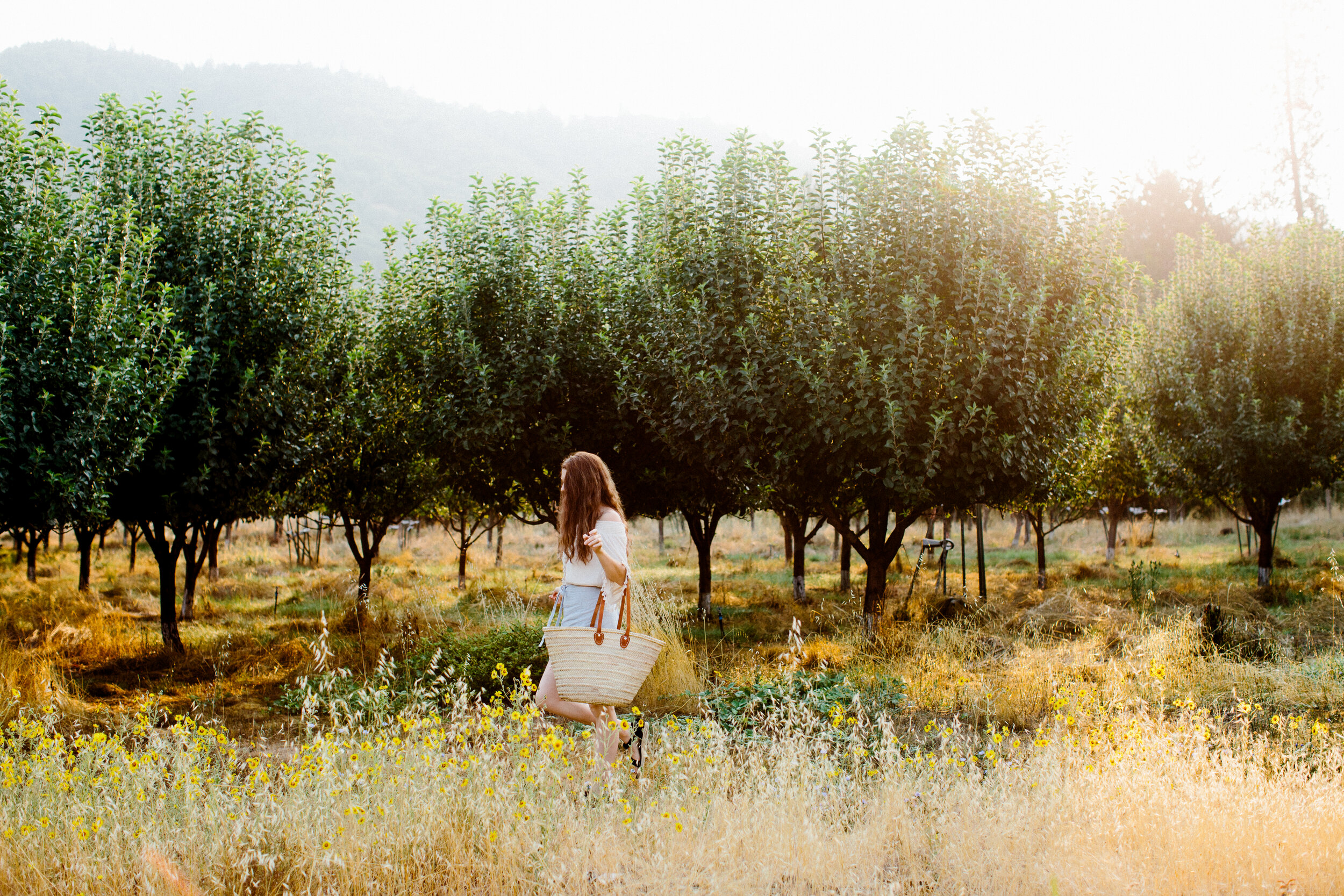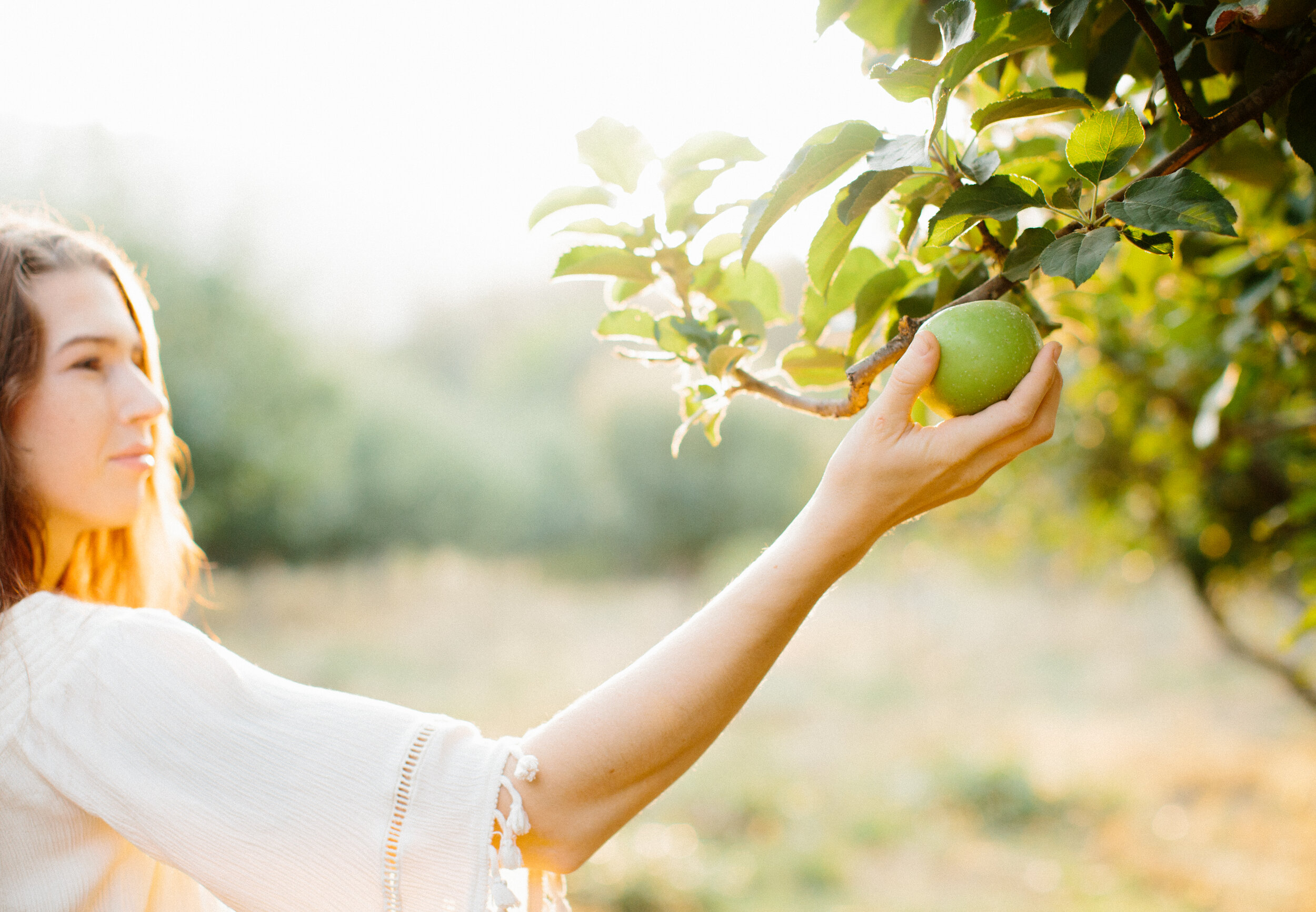
How to Plant & Care For
Your Johnny Appleseed Authentic™ Tree
Unboxing Your Tree
Apple Tree Planting & Care
For bare root trees
Soak the roots in water for 1-2 hours before planting. Do not soak the roots for more than 24 hours. Dig a hole large enough to accommodate your tree's current root system with some extra room to grow. Spread the roots to encourage outward growth. Keep the tree vertical in the planting hole to encourage straight growth (use stakes if necessary). The ideal position of the soil line will be visible on the trunk of the tree. Refill the hole with native soil and any soil amendments. Thoroughly water your newly-planted tree.
For potted trees
Dig a generous hole to accommodate the current roots and allow for future growth. Gently remove the tree from the pot and carefully score the roots with a knife or pruners. Loosen the roots gently and center the rootball in the hole, keeping the soil level of the tree even with the ground. Backfill the hole over the roots, keeping the trunk vertical and straight. Thoroughly water your newly-planted tree.
Watering & fertilization
Water as needed based on local weather patterns. Fertilize with the product of your choice according to the manufacturer's instructions.
Johnny Appleseed Authentic Tree Facts
Growing Zone: 4-8
Mature Height: 18-20'
Mature Width: 12-15'
Sunlight Requirement: Full Sun Recommended
Chill Hours: 800
Harvest Time: Late September Year to Bear: 2-5
Pollinator: Self-pollinating
Fruit Color: Green with occasional pink blush Fruit Size: 21⁄2 to 31⁄2 inches in diameter
Fruit Texture: Firm
Fruit Taste: Very sweet, medium acidity Recommended Soil Composition: Loamy Recommended Soil Moisture: Well Drained
The Complete Guide to Growing Apple Trees
A Brief History of Apple trees
There is something distinctly American about apples, we pack them in lunches, give them to our teachers, and some of us eat them daily to keep the doctor away. Apple trees did not always produce edible apples, though. John Chapman (a.k.a. Johnny Appleseed) brought apple tree orchards to the American frontier, and by foregoing grafting methods and planting by seed, he brought us the great American apple.
"From Chapman's vast planting of nameless cider apple seeds came some of the great American cultivars of the 19th century." Michael Pollan, The Botany of Desire.
What to know before you plant an apple tree
Climate
Do your research! Where you live plays a role in anything you may plant, especially apple trees.
Make sure you are in the correct growing zone before purchasing.
Apple trees grow in all temperate zones, but apples grow in Zones 3 to 9.
Apple trees require a specific amount of chilling to produce blooms at a normal time in the spring. The USDA hardiness zones map is a great tool.
What kind of tree do I plant?
Begin by looking up which varieties are native to your area, and which varieties thrive in your area.
A great way to do this is to look up a map of hardiness zones.
Choose a variety based on your growing region.
Getting started
For planting in the ground:
General supplies include: Shovels, tree pruners, and wood mulch.
Plant on the north side of the house, in a spot where the tree will have at least six hours of sun exposure daily
Choose a spot where the soil is well-drained, and the tree is not competing with other trees for nutrients.
For growing in containers
A self pollinating variety
Begin with a standard 5-6 gallon pot, then you can gradually move to larger pots when the tree stops vertical growth.
Sunlight! Apple trees love sunlight and can be moved to the shade in hotter summer climates.
Be sure to use well draining soil, and to water regularly.
For more information, Cornell’s Guide to Growing Fruit at Home is a great resource.



